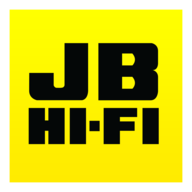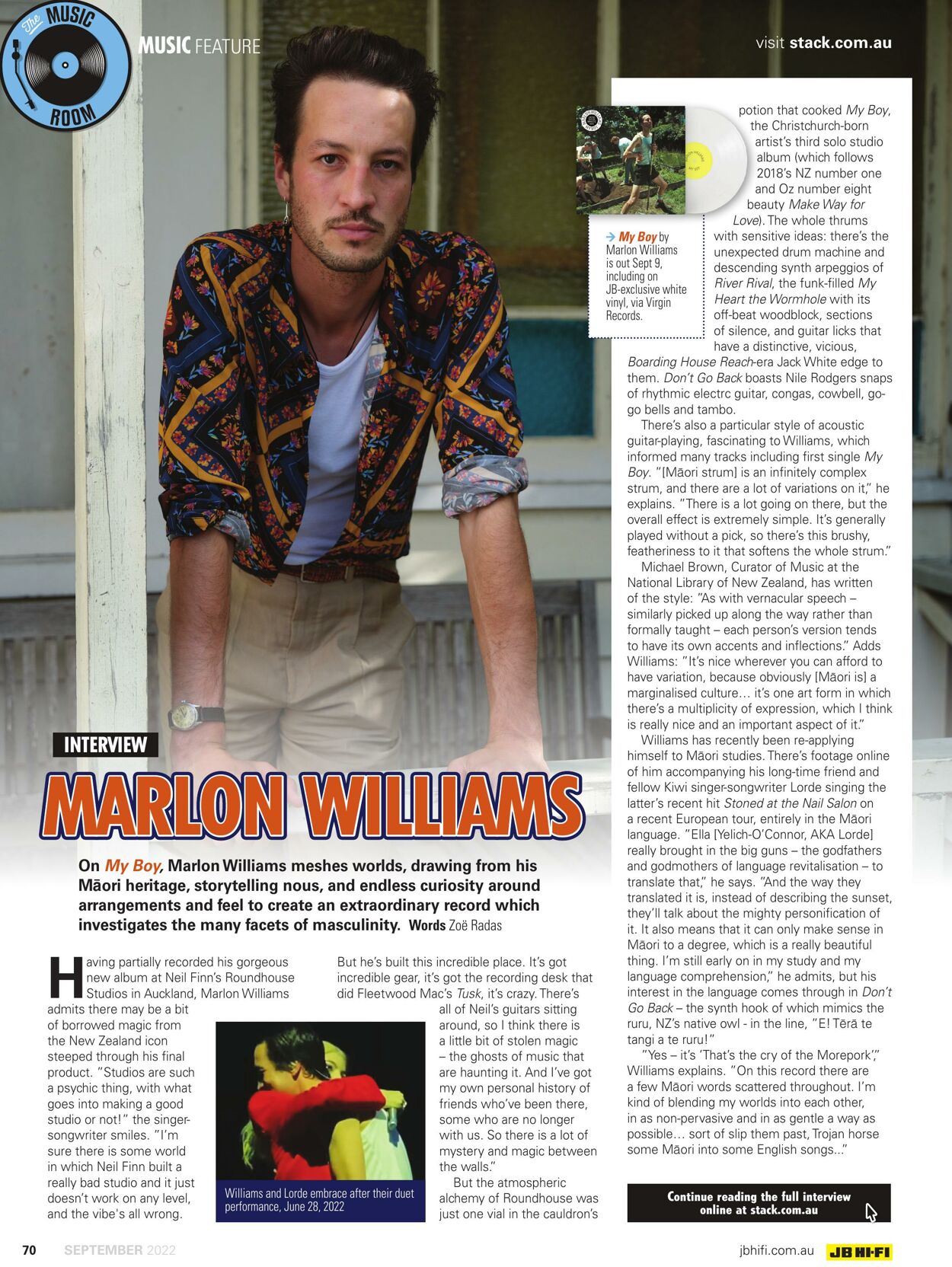













Products in this catalogue
On My Ma§ori heritage, storytelling nous, and endless cu arrangements and feel to create an extraordinary record which investigates the many facets of masculinity. Words Zoé Radas aving partially recorded his gorgeous H new album at Neil Finn's Roundhouse Studios in Auckland, Marlon Williams admits there may be a bit of borrowed magic from the New Zealand icon steeped through his final product. "Studios are such a psychic thing, with what goes into making a good studio or not!” the singer songwriter smiles. "I'm sure there is some world in which Neil Finn built a really bad studio and it just doesn’t work on any level, and the vibe's all wrong. y, Marlon Williams meshes worlds, drawing from his sity around But he’s built this incredible place. It's got incredible gear, it's got the recording desk that did Fleetwood Mac's Tusk, it's crazy. There's all of Neil's guitars sitting around, so | think there is a little bit of stolen magic - the ghosts of music that are haunting it. And I've got my own personal history of friends who've been there, some who are no longer with us. So there is a lot of mystery and magic between the walls.” But the atmospheric alchemy of Roundhouse was just one vial in the cauldron's > My Boy Marlon Williams Records. visit stack.com.a potion that cooked My Boy, the Christchurch-born artist's third solo studio album (which follows 2018's NZ number one and Oz number eight beauty Make Way for Love). The whole thrums with sensitive ideas: there's the unexpected drum machine and ina pee descending synth arpeggios of Tet nite | River Rival, the funk-illed My vinyl ig Vinin Heart the Wormhole with its off-beat woodblock, sections of silence, and guitar licks that have a distinctive, vicious, Boarding House Reach-era Jack White edge to them. Don’t Go Back boasts Nile Rodgers snaps of rhythmic electrc guitar, congas, cowbell, go- go bells and tambo. There's also a particular style of acoustic guitarplaying, fascinating to Williams, which informed many tracks including first single My Boy. "[Maori strum] is an infinitely complex strum, and there are a lot of variations on it," he explains. "There is a lot going on there, but the overall effect is extremely simple. It's generally played without a pick, so there's this brushy, featheriness to it that softens the whole strum.” Michael Brown, Curator of Music at the National Library of New Zealand, has written of the style: "As with vernacular speech — similarly picked up along the way rather than formally taught - each person's version tends to have its own accents and inflections.” Adds Williams: "It’s nice wherever you can afford to have variation, because obviously [Maori is] a marginalised culture... it's one art form in which there's a multiplicity of expression, which | think is really nice and an important aspect of it.” Williams has recently been re-applying himself to Maori studies. There’s footage online of him accompanying his long-time friend and fellow Kiwi singer-songwriter Lorde singing the latter's recent hit Stoned at the Nail Salon on a recent European tour, entirely in the Maori language. "Ella [Yelich-O'Connor, AKA Lorde] really brought in the big guns - the godfathers and godmothers of language revitalisation - to translate that,” he says. “And the way they translated it is, instead of describing the sunset, they'll talk about the mighty personification of it. It also means that it can only make sense in Maori to a degree, which is a really beautiful thing. I'm still early on in my study and my language comprehension,” he admits, but his interest in the language comes through in Don't Go Back - the synth hook of which mimics the turu, NZ's native owl - in the line, "E! Tera te tangia te ruru!” "Yes — it's ‘That's the cry of the Morepork’” Williams explains. “On this record there are a few Maori words scattered throughout. I’m kind of blending my worlds into each other, in as non-pervasive and in as gentle a way as possible... sort of slip them past, Trojan horse some Maori into some English songs...” CCU TCC] CULO ec acu) jbhifi.com.au (iB HIMFT
| Name | Details |
|---|